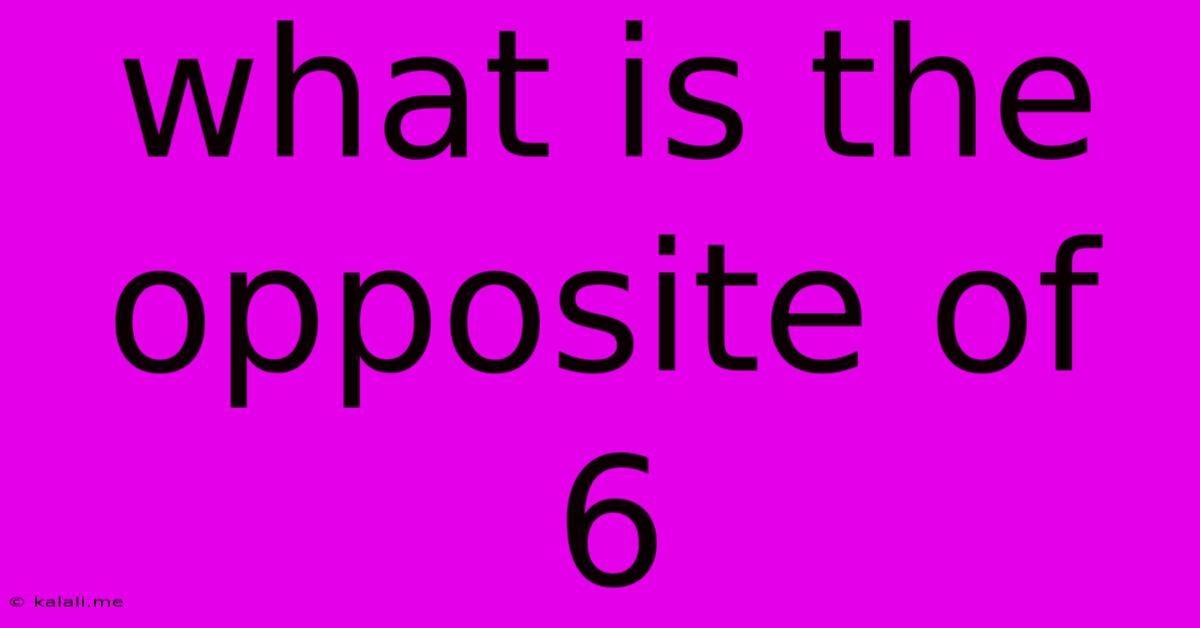What Is The Opposite Of 6
Kalali
May 09, 2025 · 2 min read

Table of Contents
What is the Opposite of 6? Understanding Opposites in Math
What's the opposite of 6? It's a seemingly simple question, but understanding the concept of opposites in mathematics, particularly with integers, requires a deeper look than just a simple answer. This article explores the concept of opposites, focusing on the number 6 and its counterpart within the number line and various mathematical contexts.
The most straightforward answer is -6 (negative six). This is because opposites, in the context of integers, are numbers that are equidistant from zero on the number line. Six units to the right of zero is 6; six units to the left is -6. They cancel each other out, resulting in zero when added together (6 + (-6) = 0). This additive inverse property is key to understanding mathematical opposites.
Beyond the Number Line: Expanding the Concept of Opposites
While the number line provides a clear visual representation for integers, the concept of opposites extends beyond simple addition and subtraction. Let's explore some different perspectives:
-
In multiplication: The opposite of multiplying by 6 is dividing by 6. This is because multiplication and division are inverse operations. Multiplying a number by 6 and then dividing the result by 6 will return the original number.
-
In sets and logic: The opposite concept might relate to set theory or boolean logic, depending on the context. For instance, if 6 represents a specific element in a set, its opposite might be the absence of that element or its complement within a larger universal set. In boolean logic, it could be the negation of a statement involving the number 6.
-
In real-world contexts: The concept of "opposite" often depends on the situation. If 6 represents a profit of 6 dollars, its opposite might be a loss of 6 dollars. Similarly, if 6 represents a positive movement of 6 units, its opposite could represent a negative movement of 6 units. Context is crucial when defining opposites in practical applications.
Thinking Critically About Opposites
The simple answer, -6, is accurate within the commonly understood mathematical context of integers and their additive inverses. However, broadening the scope reveals that the idea of "opposite" is relative and can be interpreted differently based on the operation, system, or context under consideration. This highlights the importance of precise language and clear definitions when discussing mathematical concepts. Understanding the nuances of opposites helps to build a stronger foundation in mathematical reasoning and problem-solving.
Therefore, while the simple answer to "What is the opposite of 6?" is undoubtedly -6, remembering the broader implications of this seemingly simple question strengthens your understanding of mathematical principles.
Latest Posts
Latest Posts
-
What Is 1 4 Of A Gram
May 09, 2025
-
20 Is What Percent Of 130
May 09, 2025
-
What Is The Relationship Between The Crust And The Lithosphere
May 09, 2025
-
Angle Bisectors Of Triangles Answer Key
May 09, 2025
-
What Shape Has 8 Angles And 8 Vertices
May 09, 2025
Related Post
Thank you for visiting our website which covers about What Is The Opposite Of 6 . We hope the information provided has been useful to you. Feel free to contact us if you have any questions or need further assistance. See you next time and don't miss to bookmark.